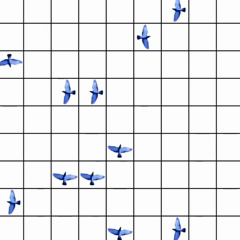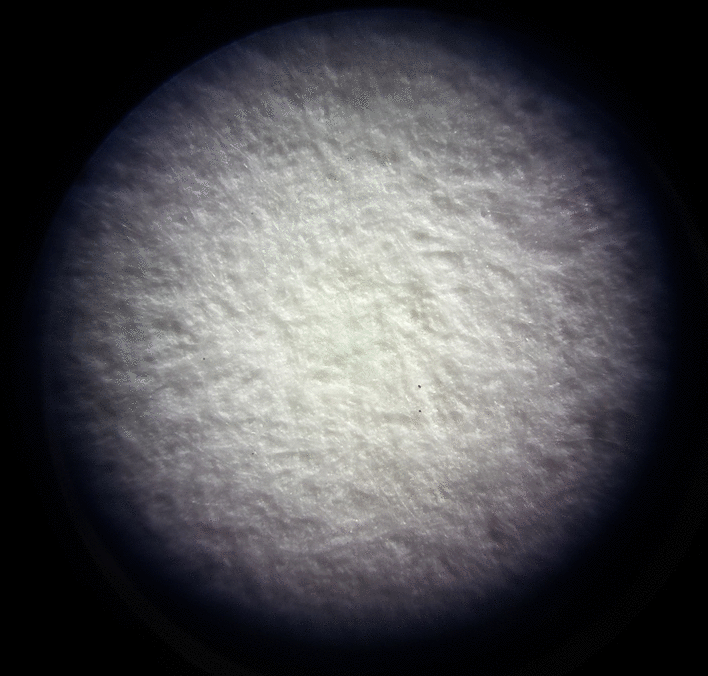BULCÂNICO
(English below)
Uma colaboração entre a artista Julia Zamboni e o físico computacional Disrael Camargo, a série BULCÂNICO representa uma exploração da interseção entre a arte tradicional de murais de azulejos e a mídia digital. Inspirada nos icônicos murais de azulejos de Athos Bulcão, uma figura proeminente na arte e arquitetura brasileiras, esta série busca reimaginar as abstrações geométricas e a abordagem "poética aberta" de Bulcão por meio de técnicas computacionais.
A influência de Athos Bulcão na arquitetura brasileira durante meados do século 20 foi profunda, particularmente na construção de Brasília, a moderna capital do país. Seus murais de azulejos distintivos, caracterizados por padrões geométricos e designs abstratos, são emblemáticos de sua visão artística única.
Tendo vivido muitos anos em Brasília, a presença cotidiana dos murais de Bulcão nos espaços públicos marcou nossas percepções sobre a arte e inspirou esta série.
Motivação
A motivação por trás da série é prestar homenagem ao legado artístico de Athos Bulcão enquanto expande os limites da arte tradicional de murais de azulejos por meio da inovação digital. Aproveitando o poder das técnicas computacionais, a série visa dar nova vida aos princípios estéticos de Bulcão, promovendo um diálogo entre o passado e o presente, entre a tradição e a inovação.
A obra de Athos Bulcão é caracterizada por sua abstração geométrica e abordagem "poética aberta". Ele projetava módulos de azulejos dispostos de maneira não periódica pelos trabalhadores da construção. Esse processo colaborativo resultava em composições dinâmicas e visualmente envolventes, que transcenderam as noções tradicionais de arte mural. A série busca emular essa abordagem utilizando autômatos celulares como modelo computacional para gerar padrões auto-organizados e dinâmicos nos murais.
Metodologia
A metodologia empregada na criação da série BULCÂNICO concentra-se no uso de autômatos celulares como modelo computacional para gerar os murais. Os autômatos celulares, inventados pelos matemáticos John von Neumann e Stanislaw Ulam, exploram o comportamento emergente de elementos simples regidos por regras locais.
Cada mural da série tem três níveis: quadrados que representam os azulejos no nível superior, grandes triângulos no nível intermediário e pequenos triângulos na base. Os pequenos triângulos, que podem ser azuis ou brancos, definem a cor dos grandes triângulos. O mural evolui seguindo regras de autômatos celulares, onde os azulejos e pequenos triângulos mudam suas cores com base nas interações com seus vizinhos. A mudança começa com um pequeno triângulo "semente", que altera gradualmente os triângulos ao redor, criando uma transição suave e contínua nos padrões de cor ao longo do mural, resultando em um design dinâmico e sempre em transformação.
Estudos de Caso
Os resultados de cada mural da série mostram os padrões, escolhas de design e efeitos visuais alcançados por meio da abordagem computacional. Estudos de caso de cada mural (BULCÂNICO I-V) oferecem insights sobre as descobertas inesperadas feitas durante o processo de criação.
Refletindo sobre as implicações do uso de autômatos celulares como ferramenta criativa, a série BULCÂNICO abre novas possibilidades para a geração de arte mural dinâmica e auto-organizada. Ao adotar tecnologias digitais, a série expande os princípios artísticos de Athos Bulcão, demonstrando o potencial da arte computacional para evoluir e inovar dentro do campo da arte mural tradicional.
***************************************************************************************************************************************************************************
A collaboration between artist Julia Zamboni and the computational physicist Disrael Camargo, the BULCÂNICO series represents an exploration of the intersection of traditional tile mural art and digital media. Inspired by the iconic tile murals of Athos Bulcão, a prominent figure in Brazilian art and architecture, this series seeks to reimagine Bulcão's geometric abstractions and "open poetic" approach through computational techniques.
Athos Bulcão's influence on Brazilian architecture during the mid-20th century is profound, particularly in constructing Brasilia, the nation's modern capital. His distinctive tile murals, characterized by geometric patterns and abstract designs, are emblematic of his unique artistic vision. By integrating his murals with architectural structures, Bulcão transformed public spaces into immersive art experiences, leaving an indelible mark on Brazil's cultural landscape.
Motivation
The motivation behind the series is to pay homage to Athos Bulcão's artistic legacy while pushing the boundaries of traditional tile mural art through digital innovation. By harnessing the power of computational techniques, the series aims to breathe new life into Bulcão's aesthetic principles, fostering a dialogue between past and present, tradition and innovation.
Athos Bulcão's work is characterized by its geometric abstraction and "open poetic" approach. He designed modular tile modules arranged non-periodic by construction workers. This collaborative process resulted in dynamic and visually engaging compositions that transcended traditional notions of mural art. The series seeks to emulate this approach by utilizing cellular automaton as a computational model to generate self-organizing and dynamic patterns within the murals.
Methodology
The methodology employed in creating the BULCÂNICO series centers around using cellular automaton as a computational model for generating the murals. Cellular automaton, pioneered by mathematicians John von Neumann and Stanislaw Ulam, explores the emergent behavior of simple elements governed by local rules.
Each mural in the series has three levels: squares representing the tiles at the top level, large triangles in the middle, and small triangles at the base. The small triangles, which can be blue or white, define the color of the large triangles. The mural evolves according to cellular automaton rules, where both the tiles and small triangles change their colors based on interactions with neighboring elements. The transformation starts with a "seed" small triangle, which gradually alters the surrounding triangles, creating a smooth and continuous transition in the color patterns throughout the mural, resulting in a dynamic and ever-changing design.
Case Studies
The results of each mural in the series showcase the intricate patterns, design choices, and visual effects achieved through the computational approach. Case studies for each mural (BULCÂNICO I-V) provide insights into the unexpected discoveries made during creation.
Reflecting on the implications of using cellular automaton as a creative tool, the BULCÂNICO series opens up new possibilities for generating dynamic and self-organizing mural art. By embracing digital technologies, the series expands upon Athos Bulcão's artistic principles, demonstrating the potential of computational art to evolve and innovate within the realm of traditional tile mural art. By reimagining Athos Bulcão's aesthetic legacy through digital media, the series offers a perspective on the enduring appeal of geometric abstraction and "open poetic" means.


























.gif)